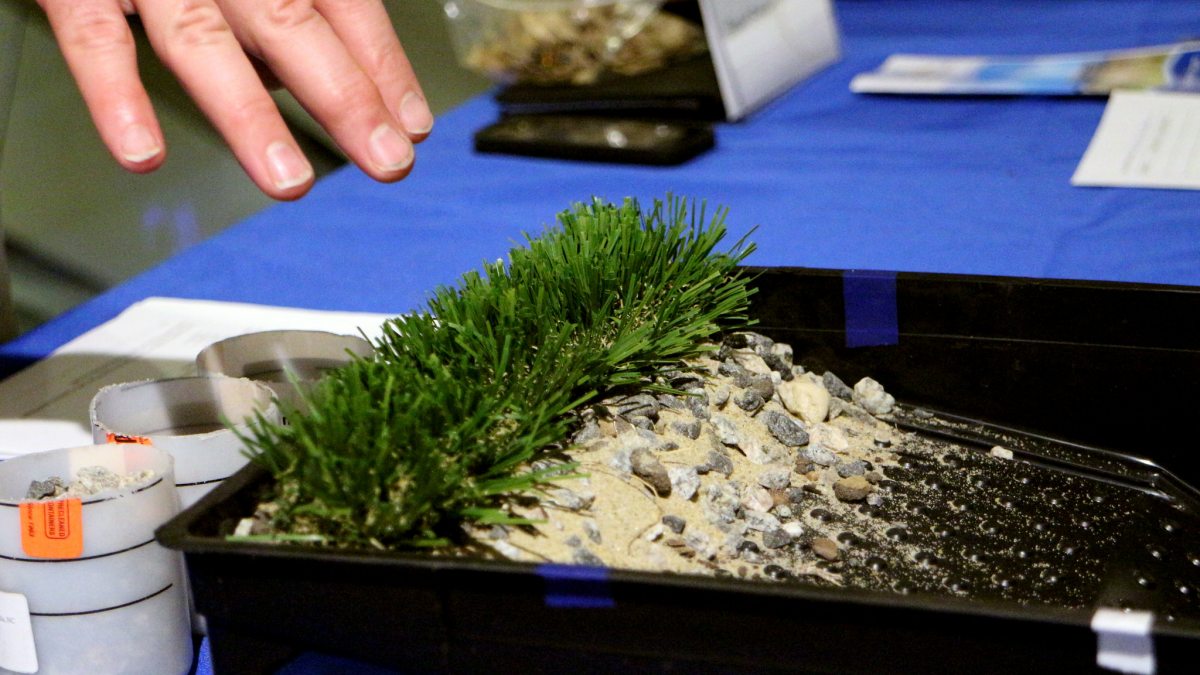Bringing research to North Carolina classrooms
Driven by graduate students, the Scientific Research and Education Network connects educators and researchers to enhance STEM learning in classrooms across the state.

Haley Plaas has always known that she wanted to be a marine scientist, dating back to a childhood trip to Sea World. Her science teachers fostered that interest, setting her on a path that led her to the UNC Institute of Marine Sciences as a doctoral student.
“I remember all my favorite teachers growing up were my science teachers,” says Plaas, who is pursuing a Ph.D. in environmental sciences and engineering from the UNC Gillings School of Global Public Health. “I remember being the most engaged in the science classes and having the most fun with my science teachers.”
Plaas is now working to bring similar inspiring experiences to young North Carolinians through the Scientific Research and Education Network, an outreach program run by graduate students that connects educators and researchers to enhance STEM learning in classrooms across the state. Through the program, better known as SciREN, graduate students work with K-12 teachers to design easy-to-use school lesson plans on their own research that teachers can bring to their students.
“We want to increase science literacy in our schools and to increase research transparency. We want to make sure that the research that we are conducting is being dispersed and disseminated to people around the state,” says Plaas, who conducts research with Hans Paerl, Kenan Professor of Marine and Environmental Sciences, at Morehead City, North Carolina.
Initially formed at the UNC Institute of Marine Sciences nine years ago, SciREN has expanded to teams of graduate students in the Triangle and other states, including California, Georgia and Virginia. More than a dozen Carolina students are involved with the program’s Coast and Triangle teams, which also include graduate students from Duke University and NC State.
“It’s really great to have people from all over because it can really only strengthen what we’re doing,” says Anne Smiley, a member of the SciREN Triangle Team and a graduate student in the College of Arts & Sciences‘ marine science department. “Different research going on and different ideas just maximizes exposure to the K-12 students.”
Each SciREN team holds two events a year: a lesson plan workshop where educators teach graduate students how to create engaging lesson plans that meet national and state standards, and then a networking event to introduce graduate students to more teachers. After connecting at the networking event, the educators can then take the classroom-ready plans back to their schools.
“Our goal is to provide local educators with the materials to bring that cool stuff back to the classroom, increase exposure to STEM subjects among young students and hopefully get them interested to potentially pursue academics or a career in STEM,” Smiley says.
By working with educators and providing the information they need to teach their classes, SciREN can reach many more students than if the graduate students were to work directly with students themselves.
And the more students they can reach in the K-12 system, the better, Smiley says.
“How can they care and develop an interest and passion in something if they don’t it know exists?” she says. “I think getting in at that early stage and showing them how interesting and impactful this kind of work is, is really important.”
But it’s not just the K-12 teachers and their students benefiting from SciREN. Developing the lesson plans allows the graduate students to practice an essential skill for researchers regardless of their field: communication.
“It’s important that we can communicate what we’re studying to an audience at any level. We’re used to speaking to other academics using a bunch of jargon that most people wouldn’t understand,” Plaas says. “I think it’s important that researchers are exercising that mindset of, ‘How am I going to translate this to an eighth-grader?’ That is probably going to be the same language that you’re using for our other outreach activities.”
Plaas, whose first lesson plan translated her work on water quality research into an experiment where students could collect their own water samples and see the impacts of fertilizer on their samples, says the chance to practice her communication skills while also helping inspire budding scientists has been an exciting opportunity.
“That’s what being a scientist is all about,” she says. “It’s really important that we’re studying something that is going to have a positive impact on our society — whether it can be water quality or specifically the outreach we’re doing. It’s the idea that it could inspire a kid to go on and pursue a similar career path that feels really good because somebody ultimately did that for me.”




